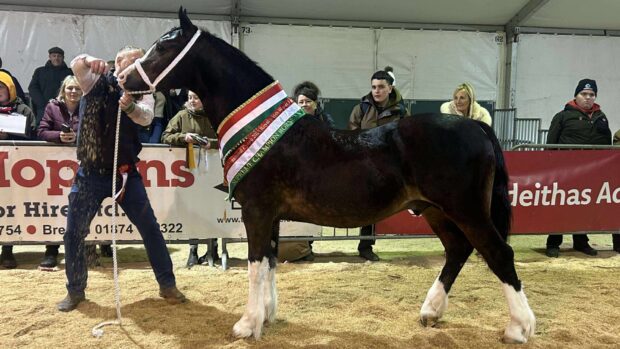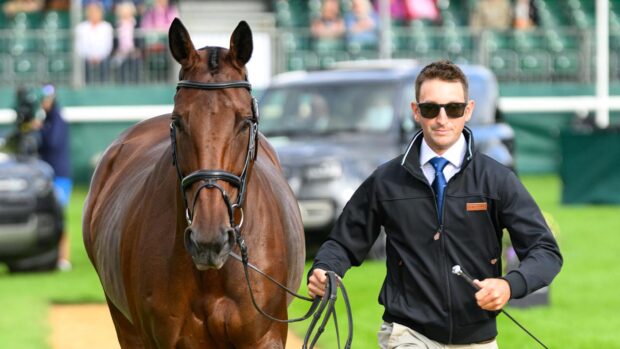The British Horse Industry Confederation (BHIC), together with the Department for the Environment, Food and Rural Affairs (Defra), the Department for Culture, Media and Sport, and the Welsh Assembly government, launched the first-ever strategy for the horse industry in England and Wales today (Monday 28 February).
The strategy, which is still at the draft stage, intends to “ensure a robust and sustainable future for the horse industry, increasing its economic value and enhancing its contribution to the social, educational, health and sporting life of the nation.”
The government had suggested in the past that the horse industry was very fragmented and this made it hard to identify appropriate support policies. This criticism first prompted the creation in 1999 of the British Horse Industry Confederation, which brings together both racing and non-racing organisations under one umbrella. Last year, the BHIC met with the Minister for the Horse, Alun Michael, and the Official for the Horse, James Brown, to kickstart a strategy that would detail industry targets and what the government could do to help achieve them.
From encouraging sporting excellence to increasing off-road riding access, six essential areas of development were identified at the meeting and each was assigned a champion. Over the next eight months, the champions looked at ways to address these issues and developed them into a coherent strategy, which was published on Monday.
“This draft strategy is a landmark in the recognition of the importance of the horse industry and its contribution to national life. For the first time the industry has come together to plan its future, with the encouragement of government,” says Minister for the Horse, Alun Michael.
Bad communications have long plagued the horse industry so it is hardly surprising that its image was deemed to be an urgent priority. The draft strategy proposes to create “a central industry communications function to improve communication, public relations and information structure and promote equestrian issues and participation” at national level. At the same time, a regional network should be established to increase participation in equestrian activities at local level.
“We hope that the initiatives in this document, which look at widening riding participation among all sections of the community, will add to our pool of world class talent across all equine disciplines,” says Minister for Sport, Richard Caborn.
Boosting participation and expanding the market for equestrian products are central to the document, which seeks to boost the performance of equestrian business sector. An earlier industry consultation highlighted that fiscal and legislative regulations — such as “the perceived inequity in the rating system between diversifying farmers and existing or new equestrian establishments” — were widely considered as the biggest hindrance to commercial success. As a result, a key proposal recommends setting up an industry-wide working group “to identify any significant fiscal and regulatory constraints on equestrian businesses.”
The draft strategy also looks closely at ways to develop and improve equestrian jobs — from encouraging work experience to building a clearer career structure — in a move which spells good news for the 250,000 people reputedly employed in the industry.
Although much of the 60-plus page document is devoted to business and professional concerns, it also takes into account the needs of competitors and leisure riders. Access to off-road riding and carriage driving is big on the agenda, with plans to launch a campaign that would encourage farmers to allow equestrian routes on their land. Local riding groups should be encouraged to raise funds and set up toll rides, but the industry also needs to “contribute more effectively to local rights of way processes” and the strategy recommends recognising a single body to “co-ordinate and lead Public Rights of Way progress.”
Sharing tasks and information across the industry emerges as crucial to expand opportunities and boost development. “It is vital that the horse world as a whole recognises this opportunity to work together with all our different sectors, from our Olympic competitors and racing participants to the thousands of grassroots riders and horse owners throughout the country, building on existing infrastructure where possible,” industry representatives wrote in their foreword to the draft strategy.
On the sporting front, for example, one of the key recommendations sees extending the British Equestrian Federation’s coaching development programme to other organisations that want to improve their training standards. BEF’s facilities and programmes clearly appear to be a benchmark for the rest of the industry, and the federation is encouraged to share its facilities strategy and long-term athlete and equine development programmes with other riding bodies. And this includes “marketing the benefits of affiliation” to unaffiliated groups — a move that unaffiliated competitors may not necessarily welcome.
“Many local sporting bodies organise equestrian activities without being linked to the national governing bodies of the sport in question,” the document states. “Sometimes rules and regulations are not administered well, and standards of insurance and health and safety are not what they should be. While costs may be lower for participants, the experience can be disappointing. Bringing such ‘unaffiliated’ groups into direct membership of the existing governing bodies would raise standards, give competitors a better experience and encourage excellence. These groups should be encouraged to reconsider their roles and work with the relevant governing body, while governing bodies should help them to join.”
If BEF is the paradigm of sporting excellence, racing is the benchmark for the breeding industry. Thoroughbred breeding is “exceptionally well-coordinated,” whereas fragmentation hinders the native breeds and sport horses sectors, making their marketing efforts “ineffectual” and causing confusion among prospective buyers. The answer, according to the draft strategy document, lies in creating a unified lead body, which can improve breeding, marketing and evaluation. Raising “the standards of the national herd” is critical and the National Equine Database, which should ultimately contain both breeding and performance information, could become the starting point to produce better quality horses. A premium scheme for mares and stallions would acknowledge success, while a Breeders’ Quality Mark scheme would help raise standards in the way studs operate.
Early reactions to the draft strategy’s proposals have been positive. “It’s great to see the horse world coming together in this way. The more participation we can encourage from an early age, the stronger all parts of the horse world including horseracing will be,” says trainer Henrietta Knight.
“It’s fantastic to see everyone united with the aim of making the British horse industry great again,” agrees Olympic gold medallist Leslie Law. “From the elite riders to the grass roots, we all want the same thing — success in all spheres — competition, breeding, standards, business and safety.”
However, both BHIC and the government stress that the strategy is still at draft stage and are actively seeking comments during the three-month public consultation period, which will end on 27 May 2005.
“We urge everyone involved with horses to take part in this public consultation and to express their views. Many of the initiatives in the draft strategy, such as the development of local horse networks, proposals for attracting and retaining staff, and improving equine business opportunities and training, could have a very positive benefit for the horse industry in this country,” says BHIC Chairman, Tristram Ricketts.
Copies are available at www.defra.gov.uk/rural/horses and comments should be sent to Alice Elliott, Horse Industry Team, Defra, Ergon House, Horseferry Road, London, SW1P 2AL by 27 May 2005. The definitive strategy for the horse industry in England and Wales will be published at the end of the year.



